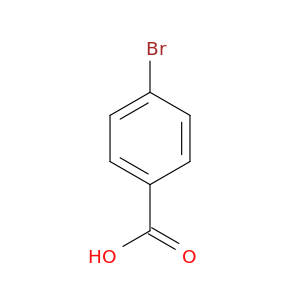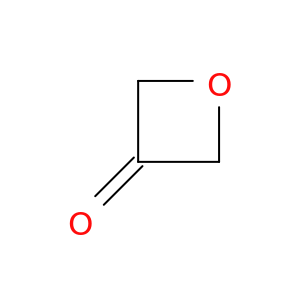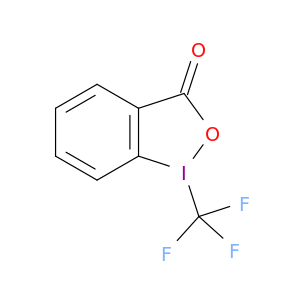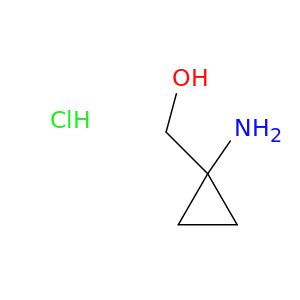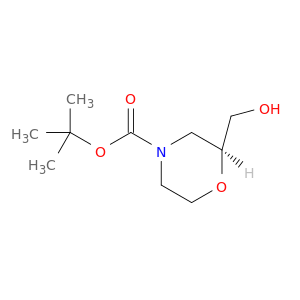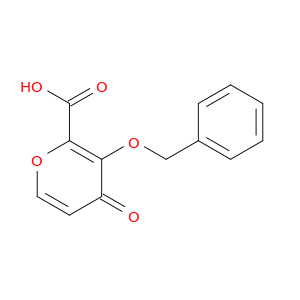200,000+ products from a single source!
sales@angenechem.com
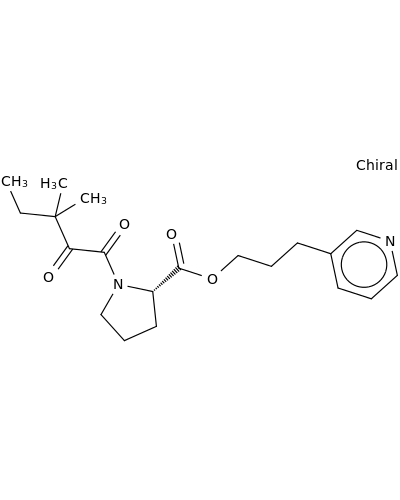
186452-09-5 | (S)-3-(Pyridine-3-yl)propyl 1-(3,3-dimethyl-2-oxopentanoyl)pyrrolidine-2-carboxylate
CAS No: 186452-09-5 Catalog No: AG0032H1 MDL No:MFCD00953146
Product Description
Catalog Number:
AG0032H1
Chemical Name:
(S)-3-(Pyridine-3-yl)propyl 1-(3,3-dimethyl-2-oxopentanoyl)pyrrolidine-2-carboxylate
CAS Number:
186452-09-5
Molecular Formula:
C20H28N2O4
Molecular Weight:
360.4473
MDL Number:
MFCD00953146
IUPAC Name:
3-pyridin-3-ylpropyl (2S)-1-(3,3-dimethyl-2-oxopentanoyl)pyrrolidine-2-carboxylate
InChI:
InChI=1S/C20H28N2O4/c1-4-20(2,3)17(23)18(24)22-12-6-10-16(22)19(25)26-13-7-9-15-8-5-11-21-14-15/h5,8,11,14,16H,4,6-7,9-10,12-13H2,1-3H3/t16-/m0/s1
InChI Key:
OQAHHWOPVDDWHD-INIZCTEOSA-N
SMILES:
CCC(C(=O)C(=O)N1CCC[C@H]1C(=O)OCCCc1cccnc1)(C)C
Properties
Complexity:
518
Compound Is Canonicalized:
Yes
Covalently-Bonded Unit Count:
1
Defined Atom Stereocenter Count:
1
Defined Bond Stereocenter Count:
0
Exact Mass:
360.205g/mol
Formal Charge:
0
Heavy Atom Count:
26
Hydrogen Bond Acceptor Count:
5
Hydrogen Bond Donor Count:
0
Isotope Atom Count:
0
Molecular Weight:
360.454g/mol
Monoisotopic Mass:
360.205g/mol
Rotatable Bond Count:
9
Topological Polar Surface Area:
76.6A^2
Undefined Atom Stereocenter Count:
0
Undefined Bond Stereocenter Count:
0
XLogP3:
3.1
Literature
| Title | Journal |
|---|---|
| Evaluation of synthetic FK506 analogues as ligands for the FK506-binding proteins 51 and 52. | Journal of medicinal chemistry 20120510 |
| GPI-1046 increases presenilin-1 expression and restores NMDA channel activity. | The Canadian journal of neurological sciences. Le journal canadien des sciences neurologiques 20100701 |
| GPI-1046 protects dorsal root ganglia from gp120-induced axonal injury by modulating store-operated calcium entry. | Journal of the peripheral nervous system : JPNS 20090301 |
| Neuroimmunophilin ligands protect cavernous nerves after crush injury in the rat: new experimental paradigms. | European urology 20070601 |
| Neuroimmunophilin ligands protect cavernous nerves after crush injury in the rat: new experimental paradigms. | European urology 20070601 |
| Neurologic complications of HIV disease and their treatment. | Topics in HIV medicine : a publication of the International AIDS Society, USA 20070101 |
| Modeling and synthesis of non-cyclic derivatives of GPI-1046 as potential FKBP ligands with neurotrophic properties. | Bioorganic & medicinal chemistry letters 20060815 |
| FK506-binding protein ligands: structure-based design, synthesis, and neurotrophic/neuroprotective properties of substituted 5,5-dimethyl-2-(4-thiazolidine)carboxylates. | Journal of medicinal chemistry 20060713 |
| The immunophilin ligand GPI1046 protects neurons from the lethal effects of the HIV-1 proteins gp120 and Tat by modulating endoplasmic reticulum calcium load. | Journal of neurochemistry 20060701 |
| Granzyme B mediates neurotoxicity through a G-protein-coupled receptor. | FASEB journal : official publication of the Federation of American Societies for Experimental Biology 20060601 |
| Selective up-regulation of the glial Na+-dependent glutamate transporter GLT1 by a neuroimmunophilin ligand results in neuroprotection. | Neurobiology of disease 20060301 |
| Pose scoring by NMR. | Journal of the American Chemical Society 20040922 |
| Molecular basis of anti-apoptotic effect of immunophilin ligands on hydrogen peroxide-induced apoptosis in human glioma cells. | Neurochemical research 20040801 |
| Protection against ischemic brain damage in rats by immunophilin ligand GPI-1046. | Journal of neuroscience research 20040501 |
| Immunophilin ligands promote penile neurogenesis and erection recovery after cavernous nerve injury. | The Journal of urology 20040101 |
| Immunosuppressive (FK506) and non-immunosuppressive (GPI1046) immunophilin ligands activate neurotrophic factors in the mouse brain. | Brain research 20030425 |
| The immunophilin ligand GPI-1046 does not have neuroregenerative effects in MPTP-treated monkeys. | Experimental neurology 20021201 |
| Neuroprotective and antioxidant properties of FKBP-binding immunophilin ligands are independent on the FKBP12 pathway in human cells. | Neuroscience letters 20020920 |
| Synthesis of N-glyoxyl prolyl and pipecolyl amides and thioesters and evaluation of their in vitro and in vivo nerve regenerative effects. | Journal of medicinal chemistry 20020801 |
| Synthesis of ketone analogues of prolyl and pipecolyl ester FKBP12 ligands. | Journal of medicinal chemistry 20020801 |
| Solid-phase synthesis of FKBP12 inhibitors: N-sulfonyl and N-carbamoylprolyl/pipecolyl amides. | Bioorganic & medicinal chemistry letters 20020520 |
| GPI1046 prevents dopaminergic dysfunction by activating glutathione system in the mouse striatum. | Neuroscience letters 20020315 |
| The neuroimmunophilin GPI-1046 partially protects against 3-acetylpyridine toxicity in the rat. | Neuroscience letters 20020315 |
| Effects of immunophilin ligands on hydrogen peroxide-induced apoptosis in C6 glioma cells. | Synapse (New York, N.Y.) 20020301 |
| Regeneration of dopaminergic function in 6-hydroxydopamine-lesioned rats by neuroimmunophilin ligand treatment. | The Journal of neuroscience : the official journal of the Society for Neuroscience 20010801 |
| Neuroimmunophilin ligands exert neuroregeneration and neuroprotection in midbrain dopaminergic neurons. | The European journal of neuroscience 20010501 |
| Systemic administration of the immunophilin ligand GPI 1046 in MPTP-treated monkeys. | Experimental neurology 20010301 |
| Failure of GPI compounds to display neurotrophic activity in vitro and in vivo. | European journal of pharmacology 20010301 |
| Immunosuppressive and non-immunosuppressive immunophilin ligands improve H(2)O(2)-induced cell damage by increasing glutathione levels in NG108-15 cells. | Brain research 20010119 |
| The small molecule FKBP ligand GPI 1046 induces partial striatal re-innervation after intranigral 6-hydroxydopamine lesion in rats. | Neuroscience letters 20010112 |
Related Products
Featured Products
© 2019 Angene International Limited. All rights Reserved.


